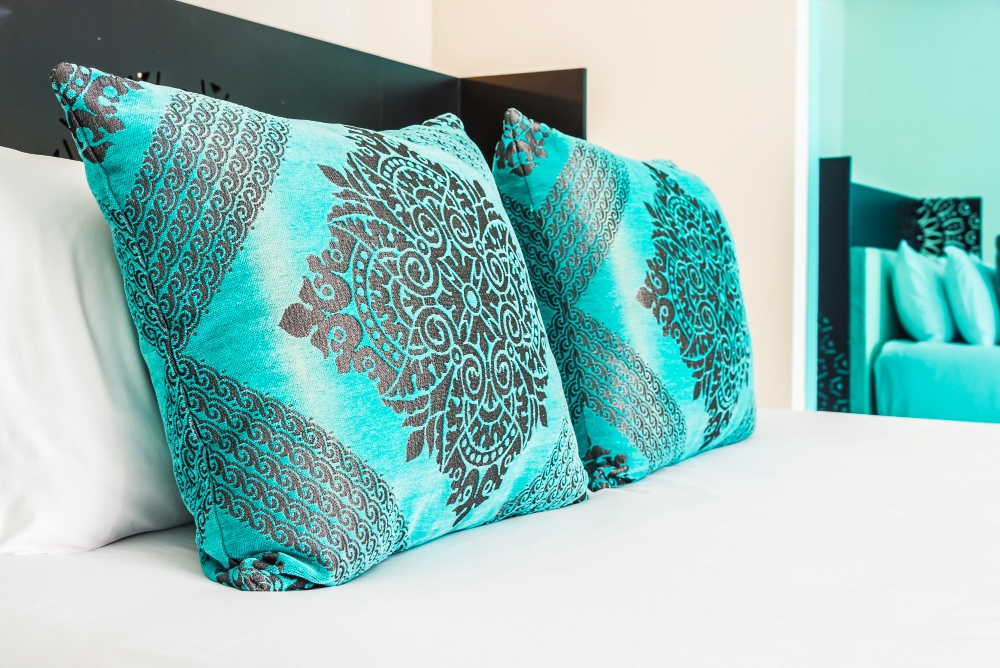Silk, satin and cotton wool; which pillowcase is best for your skin and hair?

Silk and satin pillowcases are especially popular for their soft, luxurious feel and ability to reduce skin creasing and hair damage.
When choosing your bedding, do not overlook your pillowcase; it is more than just a fabric barrier between you and your pillow.
The right pillowcase can dramatically improve your skin and hair health, elevate your sleep comfort, and even affect how hydrated or frizzy your hair feels when you wake up.
More To Read
- How to properly clean your fridge to eliminate odours
- Screen time crisis: Experts warn disappearing traditional toys harming children's brains
- Clogged no more: Simple steps to remove hair from your bathroom drain
- Why toddlers need more greens: Nutritionist shares essential vegetable tips for parents
- Five-minute breakfast: Make the perfect avocado toast
- A simple guide on how to start decluttering your home
According to the Sleep Foundation, silk and satin pillowcases are especially popular for their soft, luxurious feel and ability to reduce skin creasing and hair damage.
But while these two materials are often used interchangeably in beauty circles, they differ significantly in weave, care needs, cost, and performance.
Understanding the fabric
Silk is a natural protein fibre made from the cocoons of silkworms, most notably Bombyx mori, used to produce high-quality mulberry silk. Silk is naturally breathable, hypoallergenic, and smooth, making it a premium choice for skin and hair protection, which is why it is often expensive.
Satin, on the other hand, is a weave rather than a fabric.
Traditionally made from silk, it is now more commonly woven from synthetic materials like polyester or nylon. While it mimics silk’s sheen and smoothness, satin varies in breathability and durability depending on the fibres used.
Cotton wool pillowcases, often found in most households, are made from soft spun cotton.
While breathable and affordable, they absorb moisture, create more friction, and can be harsh on sensitive skin and textured hair.
Silk: A luxurious option for sensitive skin and hair
According to the Sleep Foundation, silk’s buttery-smooth texture is exceptionally gentle on the skin.
It does not tug or cause creases like cotton does, which helps prevent wrinkles and irritation. Silk also helps your skin and hair retain moisture, unlike cotton, which can drain it away.
For hair, silk reduces breakage, minimises split ends, and preserves hairstyles overnight.
This is especially helpful for curly, coily, or chemically-treated hair types, which are prone to dryness and friction-related damage.
Silk is also highly breathable and moisture-wicking, making it ideal for hot sleepers or those in warm climates like parts of Kenya.
However, it is highly delicate and requires handwashing at most, and it is not to be washed with other clothes. It is also very slippery and might slip from your pillowcase.
Satin: a budget-friendly alternative with silk-like performance
Satin pillowcases offer many of silk’s benefits at a lower price point.
Their smooth texture reduces tugging on skin and hair, helping to minimise frizz on hair and facial creases.
Satin made from synthetic fibres is also easier to machine wash and dries faster than silk.
While not as breathable as silk, satin pillowcases are great for people who want the beauty benefits of reduced friction without the maintenance or price tag of natural silk.
The Sleep Foundation also notes that satin pillowcases made from polyester blends are a great alternative for those with sensitive hair or skin, particularly if they are prone to irritation from rougher fabrics like cotton.
However, it is less durable than silk, and since it is not as breathable, it is not ideal for hot climates.
Cotton wool: breathable but not always beauty-friendly
Cotton wool pillowcases are widely available and extremely breathable, great for hot climates and those with oily or acne-prone skin.
However, their moisture-wicking ability can actually work against your beauty skin care routine.
The Sleep Foundation points out that cotton absorbs natural oils from your face and hair, which can leave skin dry and hair brittle over time.
Additionally, the rougher texture can cause friction while you sleep, leading to tangles, frizz, and even split ends on your hair.
Cotton pillowcase is best for Oily skin or acne-prone users and people who need an easy wash.
Which should you choose based on your skin type?
Dry/sensitive skin: Silk is the best option for retaining moisture and avoiding irritation.
Oily/acne-prone skin: Cotton can help by absorbing excess oil, but it should be washed frequently.
Mature skin: Silk reduces overnight facial compression and can prevent wrinkle formation.
Normal skin: Satin offers a soft, non-irritating balance at an affordable price.
Which works best for your hair type?
Curly/Coily hair: Silk or satin is essential to protect delicate strands and retain moisture.
Wavy hair: Satin or silk helps minimise frizz and preserve wave definition.
Straight hair: Satin is gentle and sufficient unless your hair is dry or damaged.
Chemically treated hair: Silk offers the highest protection for processed strands.
Choosing between silk, satin, and cotton pillowcases is not just a matter of luxury; it is a decision that affects your skin and hair health.
The Sleep Foundation concludes that for people with sensitive skin or textured hair, silk offers the best protection, but satin can be an excellent second-best for everyday use.
Cotton, while breathable and easy to care for, may be better suited for oily skin types or those who prioritise practicality over beauty benefits.
Whatever you choose, do not underestimate the power of your pillowcase.
Top Stories Today















































